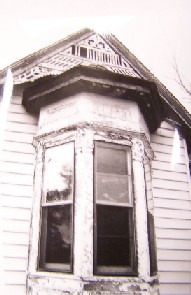Reading Notes
Here's a passage from George Nash's Renovating Old Houses:
"For me, it is this spiritual dimension, above all, that makes the renovation of old houses so deeply satisfying. To bring back a house to useful life, immersing oneself in the grain and texture of an earlier way of living in the process, is ultimately an act of resurrection of both the house and its owners.
Although the old-house restorer may undertake a profoundly spiritual journey, the path is full of physical details. Like all heroic quests, it is fraught with pitfalls and perils, both real and imagined. On the mundane level, this translates into a lot of work, time, and money. . .
You will soon find that as bad as you thought the place might be, the reality is much worse. Your original estimate of time and money needed to restore the house to bare livability will increase by a factor of three. This money will disappear into largely invisible, and therefore ungratifying, structural repairs. And winter will be coming early this year.
You probably knew all this at the outset, knew that the place really was in terrible shape even as you were poking your finger through the dry-rotted beams . . .
And so you sign a mortgage but also body and soul, spouse and children over to an idea that will soon become a joy and a burden, a black hole that devours every molecule of your time, money, and spirit. Yet even when you discover that the only thing keeping the place from blowing away is the weight of mouse droppings in the attic, you wouldn't have it any other way. If this is the case, you might be one of those old-house people, a peculiar kind of maniac who is one part ability, one part inventiveness, two parts determination, three parts romanticism, and six parts damn foolishness."
I don't think I could have said it any better myself.
"For me, it is this spiritual dimension, above all, that makes the renovation of old houses so deeply satisfying. To bring back a house to useful life, immersing oneself in the grain and texture of an earlier way of living in the process, is ultimately an act of resurrection of both the house and its owners.
Although the old-house restorer may undertake a profoundly spiritual journey, the path is full of physical details. Like all heroic quests, it is fraught with pitfalls and perils, both real and imagined. On the mundane level, this translates into a lot of work, time, and money. . .
You will soon find that as bad as you thought the place might be, the reality is much worse. Your original estimate of time and money needed to restore the house to bare livability will increase by a factor of three. This money will disappear into largely invisible, and therefore ungratifying, structural repairs. And winter will be coming early this year.
You probably knew all this at the outset, knew that the place really was in terrible shape even as you were poking your finger through the dry-rotted beams . . .
And so you sign a mortgage but also body and soul, spouse and children over to an idea that will soon become a joy and a burden, a black hole that devours every molecule of your time, money, and spirit. Yet even when you discover that the only thing keeping the place from blowing away is the weight of mouse droppings in the attic, you wouldn't have it any other way. If this is the case, you might be one of those old-house people, a peculiar kind of maniac who is one part ability, one part inventiveness, two parts determination, three parts romanticism, and six parts damn foolishness."
I don't think I could have said it any better myself.



1 Comments:
John, I remember reading that quote out of Nash's book some time ago...It does put into perspective why we do what we do. Sometimes we forget, though, and it is good to be reminded.
I should buy this book--its a good one...
Post a Comment
<< Home